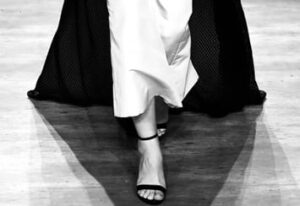 For measurable marketers, it’s not just about looks—it’s about numbers and results. But there’s still a lot marketers can learn from the world of fashion, particularly if you have flagging programs to revitalize and operations to overhall.
For measurable marketers, it’s not just about looks—it’s about numbers and results. But there’s still a lot marketers can learn from the world of fashion, particularly if you have flagging programs to revitalize and operations to overhall.
Here’s five things to consider if you want to refresh your look and have your campaigns make the best-dressed list:
Color
The right splash of color can go a long way in setting a mood, conveying feeling, and communicating your brand. It can also make a world of difference when it comes to the emails you send and landing pages you create. After all, contrast tends to draw our eye and hold our attention; we’re likelier to notice a brightly colored button or call-to-action on a neutral template than we are the template itself—color has the power to motivate direct actions, even prompt purchases.
Color gave a standout performance at this year’s Mercedes Benz Fashion Week as well, lending an optimism and eclecticism to the looks modeled. Aim for these ideas in your own usage of color. Avoid using too many colors at once, so as not to distract or overwhelm your readers, and keep an eye to the color wheel, to ensure the shades you use complement one another. And keep in mind that color affects how your content gets read—opt for a combination of shapes, positions, line types and shading patterns to get your ideas across even to those who can’t tell differences in color.
Video
It’s an adage we’ve all heard at one point or another: show, don’t tell. But it’s a well-taken one, as it reminds us our audience has better things to do than wade through seas of copy. It’s important to cut right to the chase, and videos can help to do just that, communicating in a mere few minutes what would take paragraphs to get across. Videos aren’t without benefits, either. They can increase conversions by as much as 51% in email campaigns, and reduce opt-outs by 75%.
As you get started crafting videos for your customers, do as this year’s designers at Fashion Week did and put simplicity first. Make your product the focus and shape a narrative around it, but in a way that doesn’t simply reiterate your offerings; remember, you’re telling a story, not summarizing by rote, and you’re also representing your brand. To that end, it’s a good practice to storyboard your videos in addition to scripting them, so that every image maps to a specific idea.
Headlines
Headlines can be hard to get right, but they’re nevertheless a strategically important and richly rewarding feature of any email or newsletter you send. After all, if conventional wisdom is to be trusted, readers spent 80% of their time on headlines and 20% on the copy that follows.
A number of designers at this year’s Fashion Week made bold statements in little ways—a street-styled blouse here, an off-kilter accessory there. Here are five ways to do the same: provoke curiosity, via an open-ended question or suggestive play on words; shock and awe, with a startling statistic or accusation (“Is Your Mattress Killing You?”); use humor (but sparingly); unpack your adjectives, so your readers get a full picture of what you’re selling; and, finally, lead with the benefit – make a promise to them that goes beyond any one purchase (“Get Healthier Skin Today” wins out over “Use Our Skin Cream Please”).
Mobile
The benefits to a branded mobile presence are legion. It can help you stay top-of-mind for longer (especially if you’re making a more complex, higher stakes sale—a vacation rental, say), personalize the buying experience, and make customer relationships last (with exclusive offers and the like). Mobile opens up an entirely new channel for communication, and is an increasingly critical avenue for brands to consider, given that 60% of emails are now opened on mobile devices.
As the Los Angeles Times notes, an overarching theme to the designs this year’s Fashion Week showcased was utility – function before form, comfort combined with elegance. Attempt the same in your communications via mobile. Try not to stray far from your product or industry, and keep your content simple (your “from” name familiar, your actual offer pithy) so your messages stay short, relevant, and to the point. Test headlines often to use text wisely, and make sure you orient your messages vertically, with an eye to how mobile users might scroll.
Insourced Content
These days, there’s just no doubting the impact content marketing can have on a company’s visibility, no ignoring the role it can play in advancing the bottom line. There’s also no denying the time and effort it can involve, what with writers and experts proving hard to come by. Content insourcing offers a neat workaround for this issue, as it allows organizations to leverage their own internal assets and resources to produce original material that engages, educates, and empowers. It’s also a practice very much in keeping with the styles and fashions showcased this fall, many of which drew inspiration from previous years, or else directly repurposed older accessories and garments.
As a start, map out your organization and identify subject matter experts whose minds you can mine (sales reps, customer success managers, etc.). Enlist their help in crafting datasheets and best practice guides, and incentivize contributions with rewards and giveaways, possibly exclusive access to your product.
Atri Chatterjee is the CMO of Act-On Software.



